Qomolangma deaths pose body recovery risks
Updated: 2016-05-30 02:35
(Agencies)
|
|||||||||
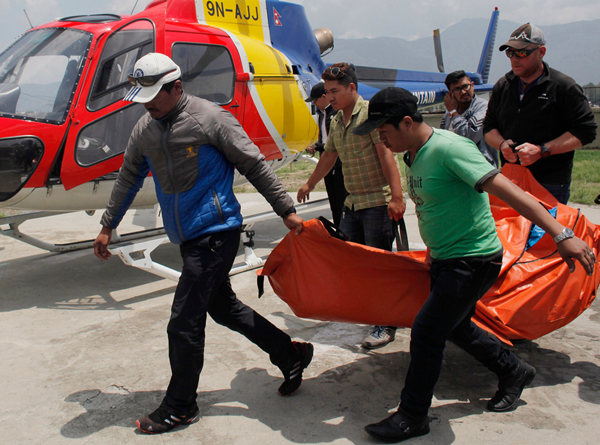 |
|
The body of a climber who died during an expedition to Mount Qomolangma is carried to a hospital in Kathmandu, Nepal.[Photo/Agencies] |
The world’s highest mountain is littered with corpses.
Nearly 300 people have died on Mount Qomolangma, also known as Everest, in the century or so since climbers have been trying to reach the summit.
At least 100 of them are still on the mountain, perhaps 200. Most of the bodies are hidden in deep crevasses or covered by snow and ice, but some are visible to every climber who passes by — landmarks in heavy plastic climbing boots and colorful parkas that fade a little more every year.
The most famous corpses get nicknames — "Green Boots", "Sleeping Beauty", "The German" — becoming warnings of what can go wrong on the 8,848-meter peak.
In one of the most unforgiving places on Earth, where low oxygen, frigid temperatures and strong winds mean any effort can seem impossible, taking down the dead is no simple thing.
So when four people died on the upper reaches in recent days, and with a fifth missing and presumed dead, climbing teams and climbers’ families scattered around the world had to face the question of whether the bodies would be brought down.
"For the loved ones back home and family members of those who fell and died on the mountain, it is worth it," said Ben Jones, a guide from Jackson, Wyoming, who made his third successful ascent of Qomolangma this year.
Arnold Coster, expedition leader for Seven Summit Treks, which lost two climbers this year on Qomolangma and spent days getting them off the mountain, said, "It’s extremely difficult and extremely dangerous."
It can take 10 Sherpas more than three days to move a body from Qomolangma’s South Col, at 8,000 meters, to Camp 2, a rocky expanse where helicopters can take over.
It is a painful, exhausting process, with the bodies, which are normally carried in sleeping bags or wrapped in tents, often much heavier because they are covered in ice.
Given the risks involved, many climbing teams decide not to bring down their dead, sometimes lowering them into crevasses or covering them with rocks so they are not gawked at.
Related Stories
Tourists attracted by Mount Qomolangma in autumn 2015-09-22 09:25
Trail route to Mount Qomolangma undamaged by quake: report 2015-08-07 21:19
Over 150 climbers stranded in Mount Qomolangma base camps 2015-04-27 19:19
18 mountaineers confirmed dead in avalanche in Mount Qomolangma 2015-04-26 13:40
Quake triggers Mount Qomolangma avalanche, reports say 18 killed 2015-04-26 07:25
Today's Top News
Rescue vessel eyed for the Nansha Islands
Steeled for change
EU has to cope with outcome of British referendum
Four Chinese banks among world's 10 largest
Kiev swaps Russian detainees for Ukraine's Savchenko
Refugees relocated during major police operation
China calls for concerted anti-terror efforts
London's financial centre warns of dangers of Brexit
Hot Topics
Lunar probe , China growth forecasts, Emission rules get tougher, China seen through 'colored lens', International board,
Editor's Picks
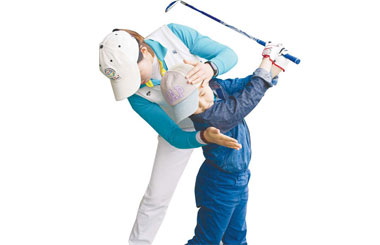
|

|
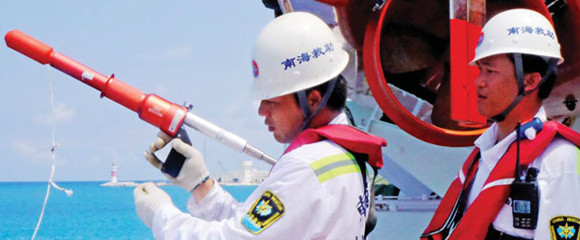
|
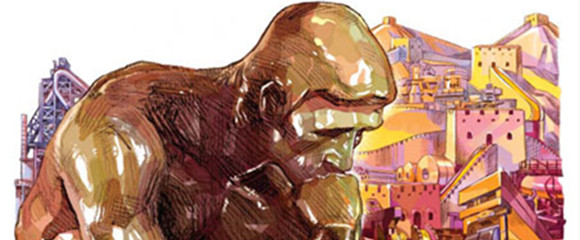
|
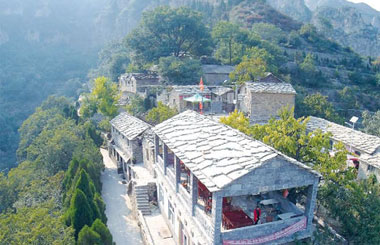
|

|







